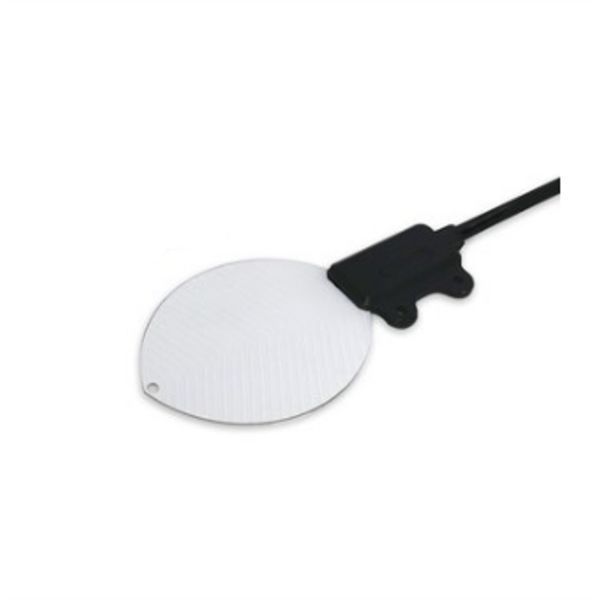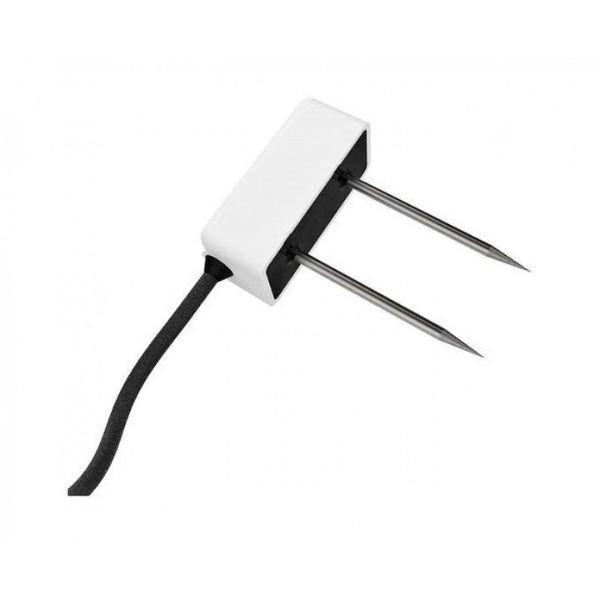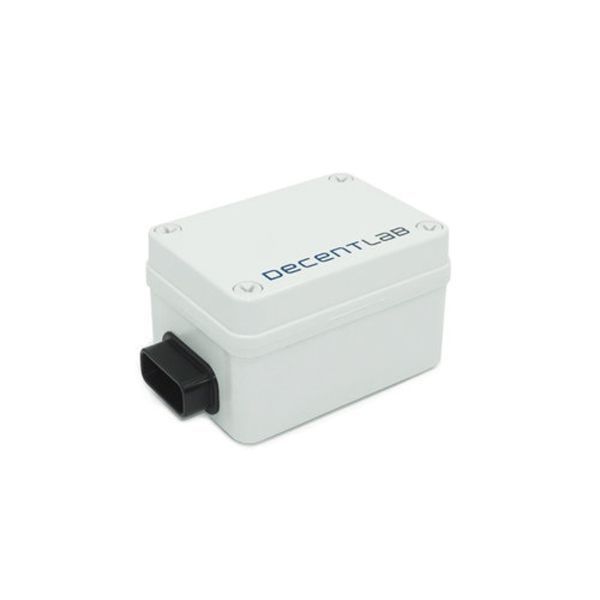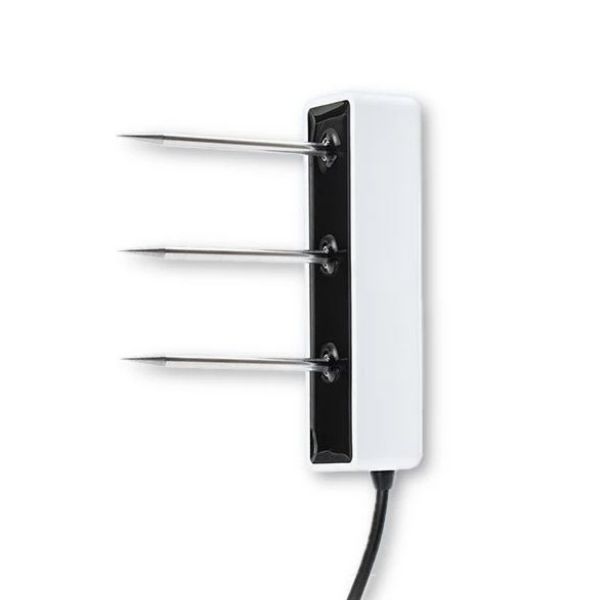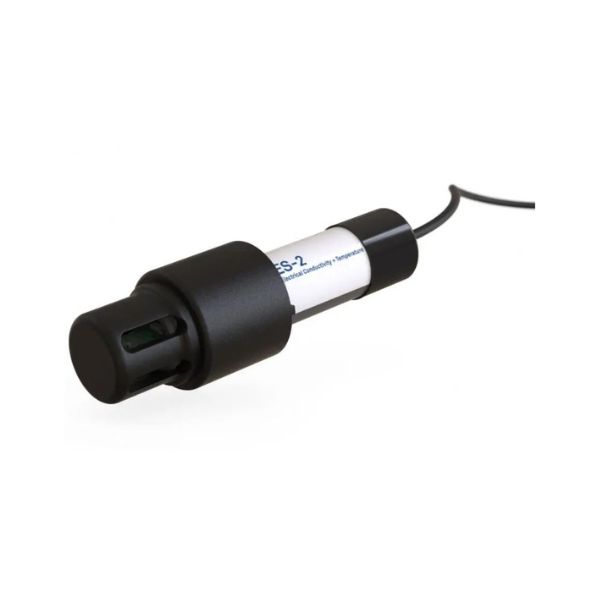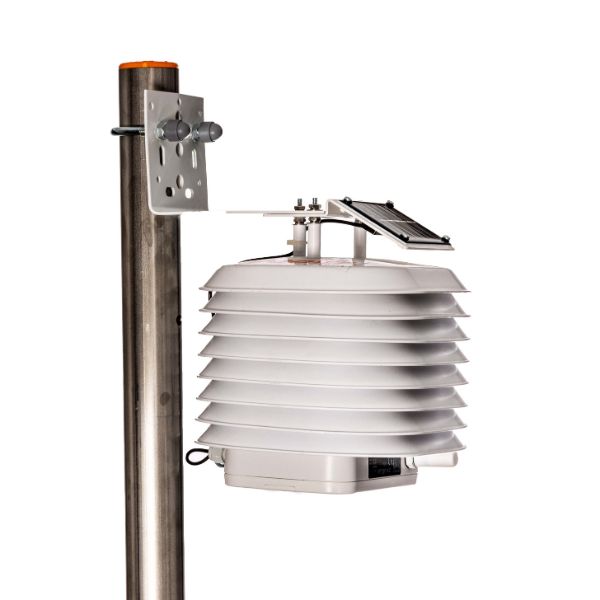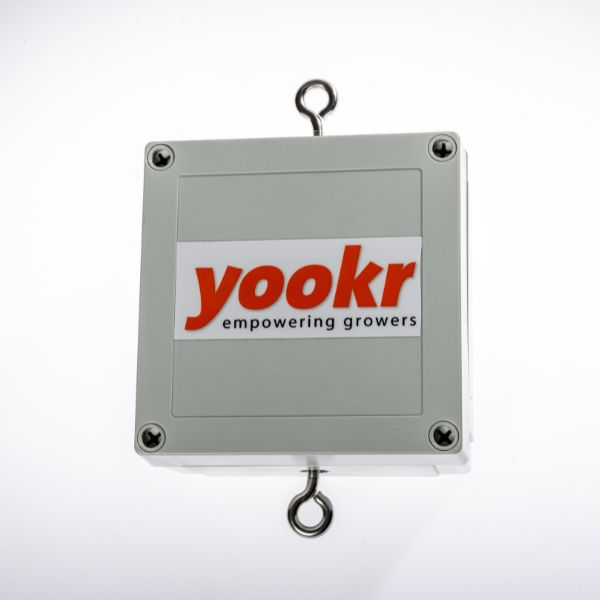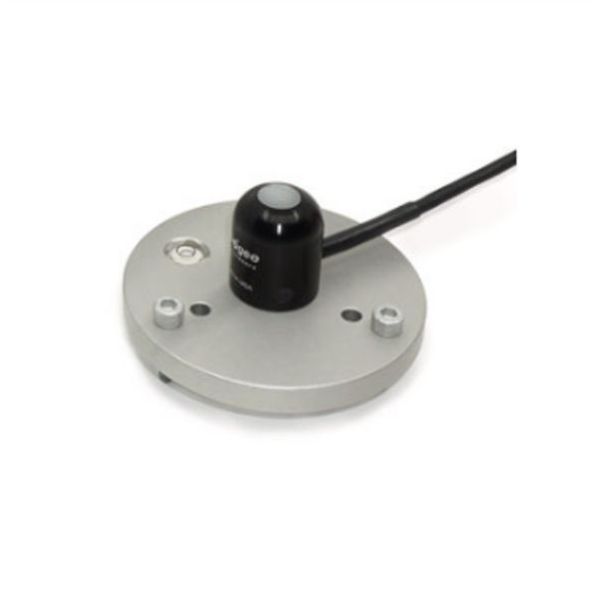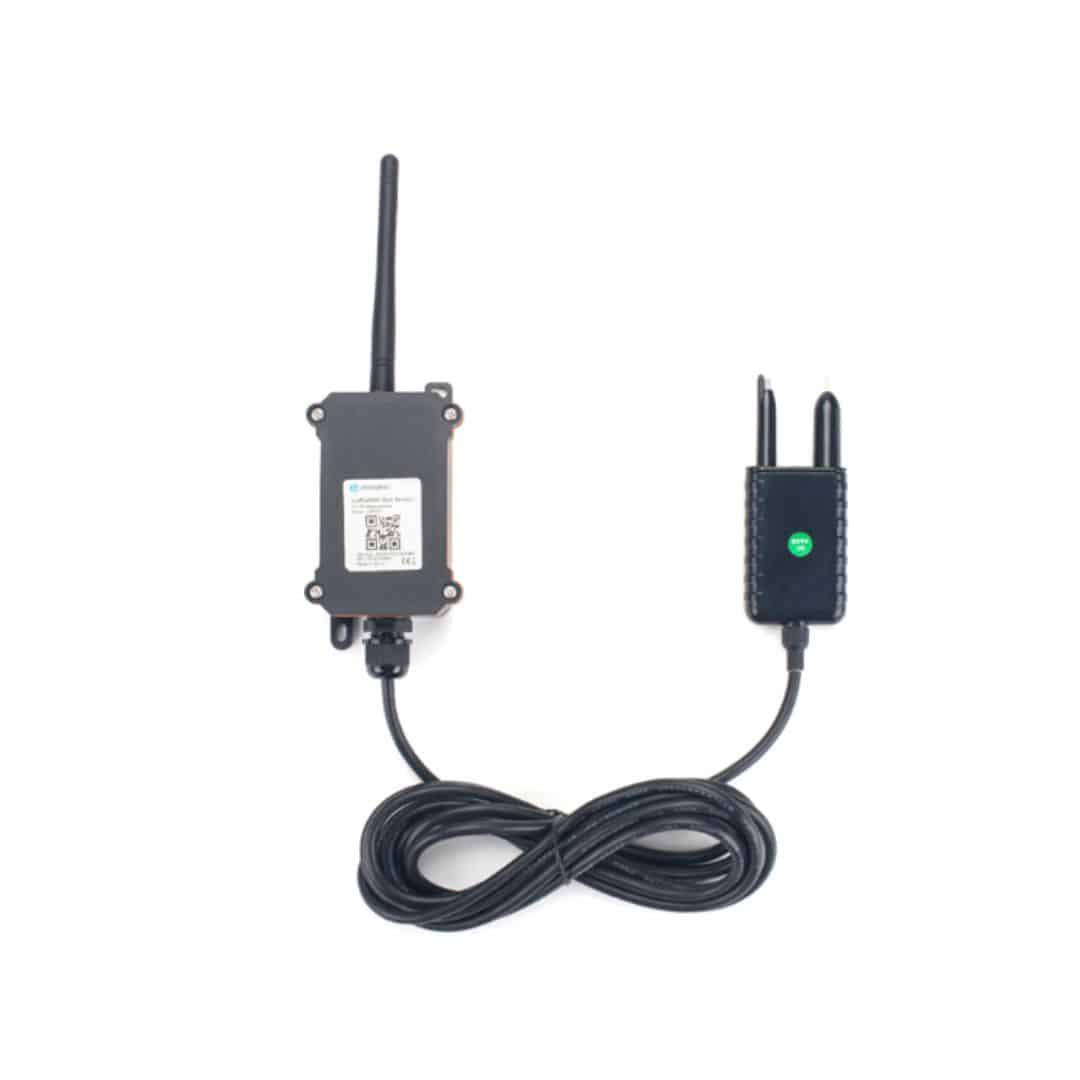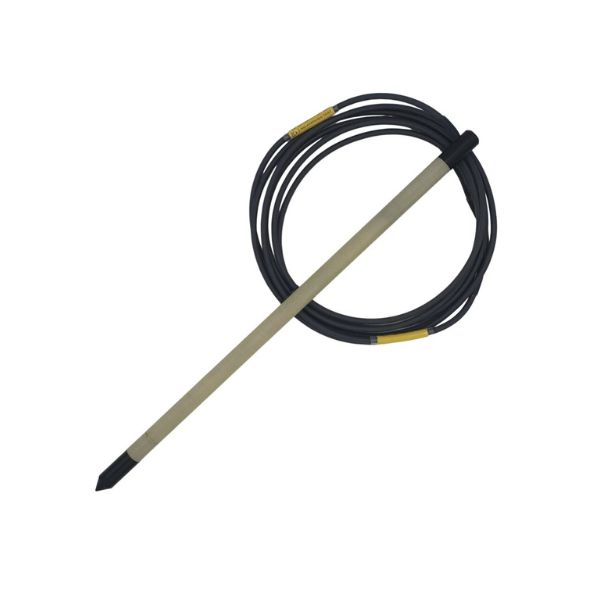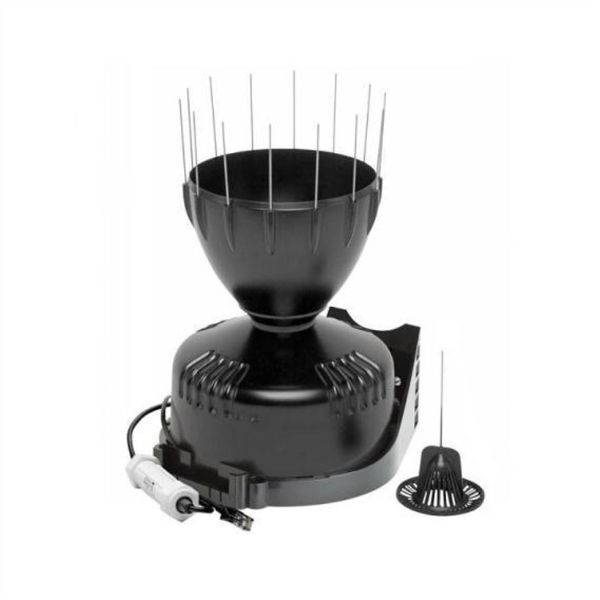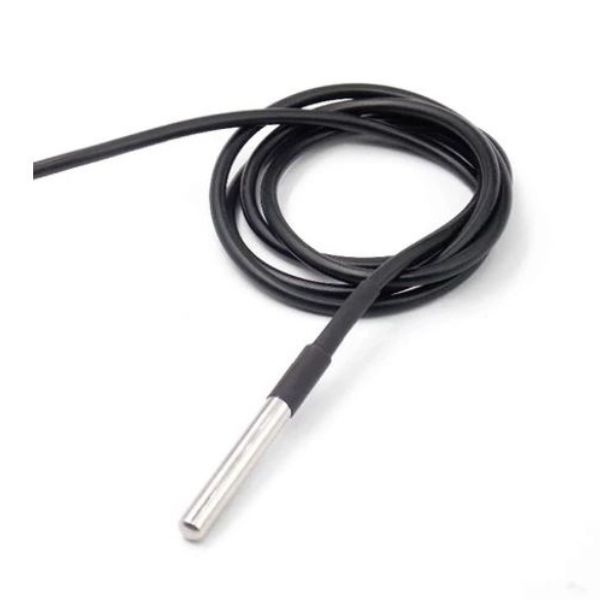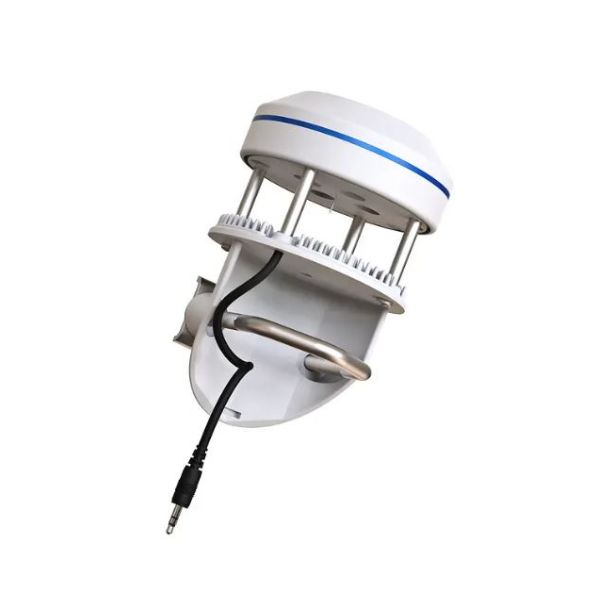Get
in
touch
Yookr’s 14 best sensors
Request
information
Leaf wet
A leaf wet sensor is a device used to measure the amount of moisture on a leaf. It is often used in agriculture and horticulture to determine when plants need water. The sensor works through two electrodes placed on the surface of the blade. When moisture is present on the sheet, an electric current is generated between the electrodes. The more moisture present on the sheet, the stronger the electric current becomes.
If the sensor indicates that there is little water on the leaf, the plants need to be watered so they can grow. If there is too much water on the leaves, it can cause diseases and pests that can damage the plants. Therefore, it is important to use the leaf wet sensor properly and take into account the ambient temperature and humidity.
The sensor helps farmers and gardeners ensure their plants get enough water and grow healthily.
Request
information
Soil moisture
A soil moisture sensor is a device that measures soil moisture. It measures how much water is in the soil.
Soil moisture is important for plants because they need water to grow. If the soil is too dry, plants can dry out and die. If the soil is too wet, flooding can occur and plants can rot.
By measuring soil moisture with a sensor, we can find out if the soil is too wet or too dry and take action if necessary. For example, by giving more water to plants if the soil is too dry, or by improving drainage if the soil is too wet. This way, we can ensure that plants stay healthy and grow well.
Request
information
CO2
A CO2 sensor is a device that measures the amount of carbon dioxide (CO2) in the air.
Carbon dioxide is a gas naturally present in the air. It is produced by all living organisms and is emitted when humans breath out. But sometimes the amount of CO2 in the air can get too high, especially in enclosed spaces such as classrooms or offices where there are many people. This can lead to deteriorating air quality and health problems such as headaches, fatigue and reduced concentration.
Request
information
EC in soil
An EC sensor is a device that measures the electrical conductivity of water in the soil. It measures how easily electricity can flow through water.
The electrical conductivity of water is important for plants because it indicates how many nutrients are in the water. If there are plenty of nutrients in the water, plants can grow better and be healthier.
By measuring the electrical conductivity of water with an EC sensor, we can find out if there are enough nutrients in the water in the soil for plants. If nutrients are in short supply, we can add fertiliser, for example, to help plants grow and stay healthy. This allows us to ensure that plants can grow and flourish properly.
This EC sensor also measures soil moisture and temperature.
Request
information
EC in water
The EC-in water sensor is a device that helps gardeners measure EC levels in water. EC stands for Electrical Conductivity and shows how many salts are in water, which plants need to grow. The sensor sends electrical current through water and measures how easily this current moves. This is how the EC value is determined. Proper EC levels are crucial for healthy crops. Too many salts can be harmful, while too few nutrients also cause problems.
This EC sensor also measures water temperature.
Gardeners use this sensor to monitor the health of their plants and ensure a good harvest.
Request
information
Particulate
A particulate sensor is a device that measures the amount of tiny particles in the air we call particulate matter.
The particulate sensor uses a sensor to measure the amount of fine dust in the air. It measures the concentration of these particles in the air and can thus determine whether the air is healthy to breathe.
Particulate sensors are important for various applications. For example, they can be used to monitor air quality in a particular environment, such as a city or a factory. By measuring the amount of particulate matter in the air, we can improve air quality and make it healthier for people to breathe.
Besides particulate matter (PM), this sensor also measures temperature, air pressure and humidity.
Request
information
Weight
A weight sensor is a device that measures the weight of an object. It measures how heavy something is.
The weight sensor is used in greenhouse farming to measure the weight of a plant. By measuring plant weight, the influence of other environmental variables, such as PAR (photosynthetically active radiation), temperature or humidity, can be reflected on plant weight gain. This provides valuable information for gardeners and farmers who want to optimise their crops and monitor the health of their plants.
We offer weight sensors that vary in weight capacity and resolution. Our sensors can weigh up to 6, 12, 30, 60, 100 or 200 kg, with a resolution of ± 4,000 steps. Our weight sensors are of high quality and come with the necessary cables and software making them easy to apply.
Request
information
PAR
A PAR sensor is a device that measures the light intensity of the part of the light spectrum used by plants for photosynthesis, this is also called Photosynthetically Active Radiation (PAR).
The PAR sensor measures the amount of light falling in the PAR range. This range is between 400 and 700 nanometres, meaning it measures the part of the light spectrum used by plants for photosynthesis. Based on this measurement, it can be determined whether the plant gets enough light to grow.
PAR sensors are important for various applications in agriculture and horticulture. For example, they can be used to determine how much light plants need to grow properly, or to optimise plant growth in a greenhouse environment.
By measuring light intensity with a PAR sensor, we can ensure that plants receive enough light to grow and stay healthy, which is important for healthy food production.
Request
information
pH
A pH sensor is a device that measures the acidity of a solution.
A pH sensor works by measuring the concentration of hydrogen ions (H+) in a solution. The more hydrogen ions present in the solution, the more acidic the solution is and the lower the pH will be. The sensor measures this concentration and translates it into a pH value that can be read.
pH sensors are used in many different applications. For example, in agriculture to measure soil acidity to determine which crops grow best.
By measuring the acidity of a solution with a pH sensor, we can better understand the effects different solutions have on their environment and the processes taking place in it.
Request
information
Pyrano
A pyranometer or pyranosensor is a device that measures the total amount of solar radiation falling on a particular place on Earth.
The pyranometer measures the total amount of solar radiation falling on a given location on Earth. This includes all types of solar radiation, including visible light, infrared radiation and ultraviolet radiation.
Pyranometers are important for various applications, such as monitoring solar production on solar power plants, determining the amount of solar radiation falling on crops and forecasting the weather.
By measuring the total amount of solar radiation with a pyranometer, we can better understand how solar heat is distributed around the Earth and how it affects the weather.
Request
information
Redox
A Redox sensor is a device used in agriculture and horticulture to measure changes in redox reactions.
When a redox reaction takes place, electrons are transferred from one substance to another. The redox sensor measures this electron flow. The meter on the redox sensor displays a value indicating how many electrons are transferred. This can be used to obtain information on soil conditions, such as the presence of nutrients or acidity.
With a Redox sensor, farmers and gardeners can assess soil quality, plant growth and fertiliser requirements and take targeted measures to improve crop yield and quality.
Request
information
Rain
A rain sensor is a device that detects when it starts and stops raining.
The rain sensor measures the amount of precipitation falling and uses this information to determine when it starts and stops raining. For example, it measures the amount of water falling on a particular spot.
By detecting rain with a rain sensor, we can ensure that we use water efficiently in agriculture and horticulture.
Request
information
Temperature
A soil temperature sensor is a device that measures the temperature of the soil. It measures how hot or cold the ground is.
Soil temperature is important for plants because they grow best at a certain temperature. If it is too cold or too hot, they may stop growing or even die.
By measuring soil temperature with a sensor, we can find out if the soil is too hot or too cold and take action if necessary. For example, covering the ground with a layer of straw if it is too cold, or creating shade if the ground is too hot. This way, we can ensure that plants stay healthy and grow well.
An air temperature sensor is a device that measures the temperature of the air. It measures how hot or cold the air is.
Request
information
Weather station
The heart of the weather station is a complex network of sensors that continuously collect data on atmospheric conditions. This ultrasonic weather station measures air temperature, wind speed and wind direction.
This innovative device, which uses modern sensors, makes it possible to measure wind speed and direction without moving parts. And that makes the device very easy to maintain.

